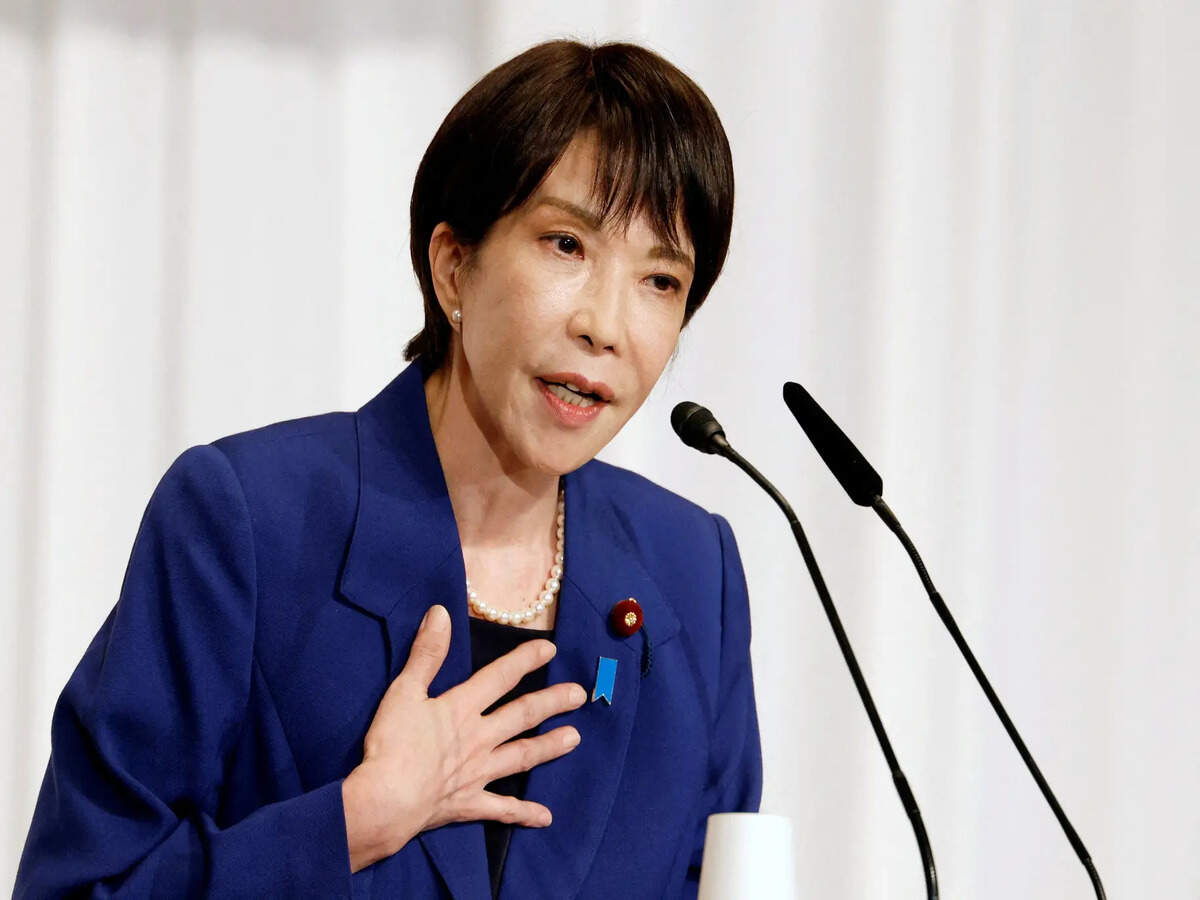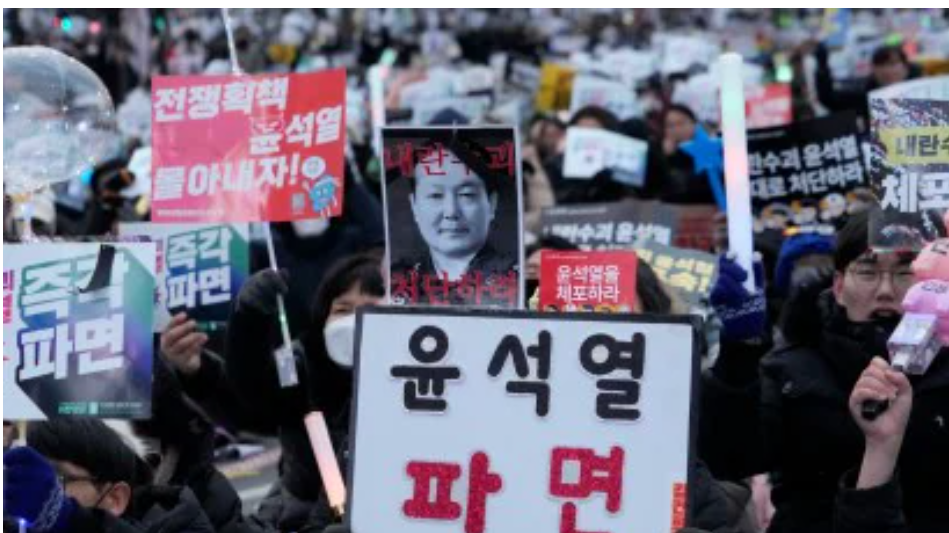By SEO JUNE
America News World
October 21, 2025
TOKYO – In a seismic shift for Japanese politics, hardline conservative Sanae Takaichi stands on the precipice of shattering centuries of tradition by becoming Japan’s first female prime minister. The 64-year-old Liberal Democratic Party (LDP) leader secured a pivotal coalition pact late Sunday with the right-wing Japan Innovation Party (Ishin), averting a potential government collapse and paving the way for her confirmation in parliament today.

The agreement, forged just 10 days after the LDP’s long-standing alliance with the centrist Komeito unraveled, combines the two parties’ 231 seats in the lower house—two shy of a majority but sufficient to clinch victory in the prime ministerial vote. Takaichi, a protégé of the late Shinzo Abe, expressed optimism during the signing ceremony at the National Diet Building. “I very much look forward to working together in an endeavor to strengthen Japan’s economy and transform the country,” she declared, flanked by Ishin leaders Osaka Governor Hirofumi Yoshimura and parliamentary head Fumitake Fujita.
The deal’s ink was barely dry when financial markets reacted with fervor. The yen tumbled against the dollar as investors bet on Takaichi’s fiscal dovishness—her advocacy for expanded government spending and tax cuts to shield households from inflation. Meanwhile, the Nikkei 225 surged 3.4% to a record high, capping off a week of volatility triggered by the Komeito split. Nomura Securities strategist Fumika Shimizu attributed the rally to “expectations for Takaichi’s economic policies, which include fiscal expansion and monetary easing.”
Yet, the path to power wasn’t without drama. The Komeito’s abrupt exit on October 10—protesting the LDP’s pivot toward Takaichi’s ultraconservative wing—sparked frantic opposition maneuvering. Ishin, Japan’s second-largest opposition force, weighed overtures from rivals but ultimately sided with the LDP, quashing any immediate threat to the ruling party’s decade-long dominance. “This ends the risk of the LDP losing power,” analysts noted, echoing sentiments from Tokyo’s political corridors.
In exchange for their endorsement, Ishin extracted key concessions aligning with its small-government ethos. Takaichi pledged a 10% reduction in lawmakers’ numbers and a two-year suspension of the consumption tax on food—measures aimed at easing living costs amid persistent price pressures. Ishin, however, will abstain from cabinet posts initially, with Yoshimura emphasizing policy implementation over immediate influence. “We’re still a group of lawmakers with no experience in government,” he told NHK in a Monday interview. “We want to focus on realizing our policies as part of the ruling coalition.”
Takaichi’s ascent caps a turbulent year for the LDP, which hemorrhaged seats in 2024 and 2025 elections amid scandals and voter fatigue. Outgoing Prime Minister Shigeru Ishiba’s resignation in September triggered the leadership race, where Takaichi edged out moderates like Shinjiro Koizumi in a runoff on October 4. Her victory, hailed by supporters as a return to the party’s “right-wing DNA,” has polarized observers. Professor Jeff Kingston of Temple University in Tokyo warned that her hardline stance may exacerbate internal rifts, complicating efforts to woo additional opposition votes for critical legislation like a supplementary budget.
Dubbed Japan’s “Iron Lady” for her admiration of Margaret Thatcher, Takaichi blends economic populism with security hawkishness. A vocal critic of the Bank of Japan’s recent rate hikes, she champions higher spending to combat inflation without stifling growth. On foreign policy, her agenda is unapologetically assertive: revising Article 9 of the pacifist constitution to legitimize Japan’s Self-Defense Forces, boosting defense budgets to counter China, and tightening immigration controls. Her frequent visits to Tokyo’s Yasukuni Shrine—a site honoring war dead, including convicted war criminals—have long irked Beijing and Seoul, who view it as a nod to imperial aggression.
Takaichi’s conservatism extends to social issues, where she opposes reforms like allowing married women to retain their maiden names, arguing they erode traditional family values. Women’s rights advocates express mixed feelings about her milestone. “As the first female PM, she breaks barriers, but her policies may not advance gender equality,” said one activist in a New York Times profile. Indeed, Takaichi’s track record—spanning ministerial roles in internal affairs and economic security under Abe and Fumio Kishida—prioritizes national sovereignty over progressive causes.

Born in 1961 in Nara Prefecture, Takaichi entered politics in 1993 after a stint as a producer at NHK. Married to lawmaker Taku Yamamoto, who suffered a stroke in 2025, she balances public life with caregiving duties. An avowed fan of J-rock bands like B’z and X Japan, as well as Hanshin Tigers baseball, she projects a relatable persona amid her ideological rigidity.
As parliament convenes today, Takaichi requires only a simple majority of cast votes in any runoff, a threshold her coalition comfortably clears. Post-election, she’ll unveil her cabinet, with broadcaster FNN reporting her intent to name Satsuki Katayama—former regional revitalization minister—as finance chief. This lineup signals continuity in fiscal prudence while nodding to her expansionary vision.
For the U.S. and global allies, Takaichi’s premiership arrives at a fraught juncture. With President Donald Trump slated for an Asia visit next month, her China hawkishness could deepen Tokyo-Washington security ties, particularly on Taiwan and the South China Sea. Yet, her fiscal looseness risks clashing with efforts to tame Japan’s ballooning debt. Analysts like those at BMI Research foresee a “minority government” reliant on ad-hoc alliances, testing Takaichi’s coalition-building acumen amid domestic woes like the cost-of-living crisis.
Ishin, despite its budget-cutting zeal, may temper Takaichi’s spending spree, fostering a pragmatic balance. “Some analysts say Ishin could restrain her ambitions,” Reuters noted, hinting at the checks and balances in this unlikely union.
Takaichi’s triumph isn’t just personal—it’s a litmus test for Japan’s conservative soul. In a nation grappling with demographic decline, economic stagnation, and regional threats, her leadership promises bold strokes but invites scrutiny. As she steps into the prime minister’s residence, the world watches: Will the Iron Lady forge a resilient Japan, or fracture it further along ideological lines?
For now, the historic vote unfolds, marking not merely a gender first, but a conservative resurgence in the Land of the Rising Sun
Atish Patel covers international politics for America News World. Reach him at atish@anw.com.
Discover more from AMERICA NEWS WORLD
Subscribe to get the latest posts sent to your email.










































Leave a Reply